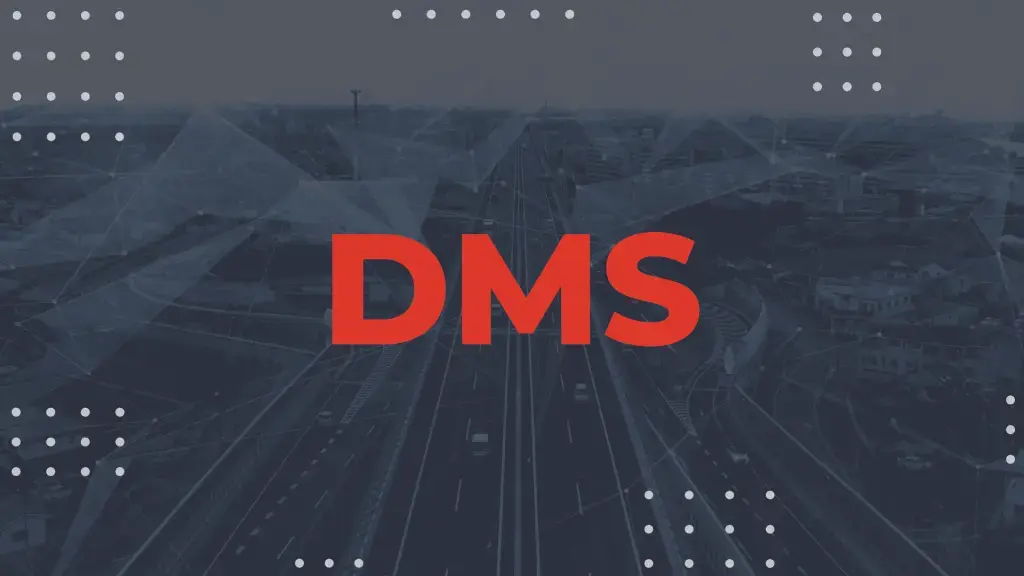DMS is replacing AGS.
- Thu, April 20, 2023
- 6.5 minute read

The migration from AGS to DMS also means that the technical communication between our organisation and Dutch Customs’ declaration system is changing. As a result, our declaration software has to be thoroughly adapted. This migration is not just an adaptation of software and systems. From now on, we will have to provide other additional information to make declarations. There will also be major changes in the post-submission processes of customs declarations and communication with Dutch Customs will be different. We consider it paramount to keep you well-informed about these ongoing developments. This approach will allow you to proactively gear up for the transition to DMS. For all future updates, rest assured this page will be your timely information portal with all the latest developments.
Planning of Dutch Customs’ transition from AGS to DMS:
The current timeline for the implementation of DMS 4.0 and 4.1 for import, storage, and export declarations can be found here.
Updated on: 31-07-2023
Q&A
What does the transition to DMS mean for my business?
The transition to DMS will affect your business processes. For example, new data elements need to be delivered to complete customs declarations. To help you navigate these alterations, we have outlined the most pertinent new data elements and the ones that will undergo changes.
New data elements:
- Exporter on export
- Importer
- Country of preferential origin
- CUS code in case of chemicals
- Final status ‘goods not released’
Fields and elements to be changed:
- Procedure type
- Documents
- Valuation method
- Identification of means of transport
- SG code (strategic goods code)
26-05-2023
What customs licences are there and what are the corresponding valid licence numbers?
Customs licences are specific authorisations required for various customs-related activities, such as special arrangements and the use of simplified declaration procedures. The correct authorisation numbers must accompany all customs declarations. If the authorisation numbers are not valid, the declaration will not be accepted. It is, therefore, advised to list all your customs authorisations and check that they are up to date. Click here for an overview of all customs licences.
31-05-2023
What is the exporter at import?
The exporter at import is a new data item required to be reported at shipment level or item level. The definition of the exporter at import varies depending on the situation:
- For goods released for free circulation where special arrangements apply, the exporter at import is the last seller of the goods before they are imported into the European Union.
- For declarations of goods coming from a fiscal territory, such as the Canary Islands, the exporter at import is the consignor in the context of trade with territories with special fiscal regimes. The consignor is the last seller of the goods.
- For simplified declarations of postal consignments, the exporter is the person shipping the goods, as stated in the transport contract by the person who ordered the transport.
02-06-2023
What is the definition of the term ‘Importer’?
The term ‘importer’ is included in the declaration to recognise the indirectly represented entity in the declaration as well. The definition of an ‘importer’ is:
- For goods released into free circulation where special arrangements apply, the importer is the entity filing the import declaration or on whose behalf the declaration is made.
- For declarations for postal consignments, the importer is the entity to whom the goods are sent.
06-06-2023
What does ‘country of preferential origin’ mean, and when is it necessary to specify it?
A new piece of data that requires completion in the declaration is the ‘country of preferential origin’. This detail may be presented alongside the ‘country of origin’. The ‘country of preferential origin’ should be filled in if a treatment is applied with preference code 2xx or 3xx. For example, the General Preferential System (APS) with a REX declaration, Form A, EUR.1 and invoice declarations.
The ‘country of origin’ needs to be specified under the following circumstances:
- When no preferential treatment is being applied;
- When the non-preferential country of origin differs from the preferential country of origin. Given that origin rules can vary, it is necessary to indicate the country of origin. This facilitates the implementation of possible trade policy measures for the non-preferential country of origin, such as prohibitions, restrictions, anti-dumping duties, and countervailing duties.
08-06-2023
What is the CUS code?
The CUS code is a new mandatory piece of information to be entered in the declaration when chemicals are released for free circulation and (re-)exported. The CUS code can be looked up in the ECICS database.
Are you a logistics service provider? If so, you can pass this information on to your customers in advance. Many times this is already known to the exporter/importer thanks to the Material Safety Data Sheet (MSDS). For a customs broker, chemicals are usually too technical and specific to determine what the correct CUS code is for the chemicals in question.
For hazardous substances and mixtures, it is mandatory to attach the MSDS. This must be done in the official language of the country where the product is marketed. In addition, the MSDS must comply with the requirements of the REACH regulation.
12-06-2023
What does final status ‘goods not released’ mean?
If the goods are not released then this new final status will be used. In this case, we will receive a notification from Dutch Customs that the goods are not released.
If it is not necessary to take further measures, such as seizing the goods (forfeiture), then the declaration will be rendered inoperative just as it is currently done in AGS. In this case, the goods are not placed under the new customs regime and are still under the previous regime, unless there is a situation where the goods are seized by Dutch Customs, for example.
15-06-2023
Is it correct that the Overview of Deposits Made (OGA) was not included in DMS?
When DMS was imported, the OGA was not included. Settlements from previous periods, additional Invitations To Pay (UTBs) and monthly overruns are then no longer visible. This means that declarants have to pay a total amount without any specification. For declarants, it is important to know whether the total amount corresponds to the individual declarations of the relevant month and whether additional amounts have been taxed from other months.
Business association Fenex has asked the Customs Business Dialogue (ODB) whether they can reintroduce the provision of the OGA. In addition, they have expressed that without this statement, it will be almost an impossible task to link amounts to separate declarations. The urgent request has therefore been made to maintain the OGA or come up with another solution for this. This request is under investigation by the ODB to date.
20-06-2023
What does the location of goods stand for?
The location of goods is an accurate indication of where the goods can be examined by Dutch Customs in the event of a physical inspection. It consists of the postal code and house number.
If Dutch Customs wants to carry out a physical inspection and the declared goods are not present, the declaration may be invalidated by operation of law. For the flow of goods, it is therefore very important to indicate the correct location of goods in the assignment. Especially when you use different or external storage locations and logistics service providers, this is a point of attention.
22-06-2023
What is the SG code?
The SG code stands for strategic goods code, this is national data. This data needs to be filled in the case of military, dual-use and sanctioned goods. It is not new data, but is now included in national legislation.
28-06-2023
I am withdrawing my IIAA licence (Entry In Declarant’s Administration), what will change for me?
If you choose to withdraw your IIAA licence you will have to make a placement declaration for your shipments from now on.
28-07-2023
I am an IIAA permit holder and only use this for placement under the PDE (Private Customs Deposit) scheme, will anything change for me?
In this case, you will receive a self-assessment form from Customs no later than 10 August 2023. With this form, Customs will test whether authorisation holders meet the requirements for connection to DMS 4.1. The test is required by law. You will therefore need this self-assessment form to connect to DMS 4.1 before 1 January 2024.
Read more about the self-assessment form here, please note this information is in Dutch.
31-07-2023
Can declarations involving checks and certificates from NVWA already be processed in DMS?
Declarations including data on certificates and checks for fruit and vegetables, FLEGT, and veterinary and phytosanitary goods cannot be processed in the system in some cases. However, there is a solution for this: if you include the data at item level in the declaration, the declarations can be processed. Click here for further information in Dutch.
31-07-2023




